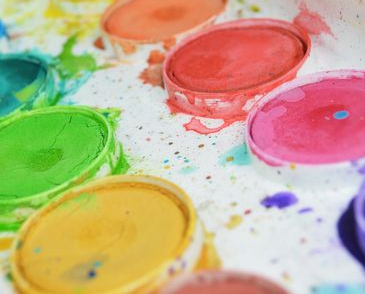Watercolour painting can open up a whole new world of creativity for individuals, but without some top professional tips, it may take longer to master the skill.
So, to help you become better at watercolour painting and indulge your creative side, here are a few tips to guide you:
Invest in high quality supplies
Starting with the paper and brushes you use; always try to buy the highest quality materials you can afford.
When shopping for paper, look for paper that is 100% cotton with a minimum weight of 140lbs/300gms, as it will be thicker and capable of handling heavier water washes, and layering. To get more out of your paper, divide it up into sections for smaller paintings, and when you make a mistake, simply turn the paper over and paint on the back.
When shopping for brushes, while you should invest in good quality ones (they hold more pigment and water), it isn’t really necessary to spend more than $100 on each one.
Buy a good set of watercolours
While your watercolour set doesn’t need to be extensive and fancy, you should still try to best the set that you can reasonably afford.
Practice plenty
The best way to improve your painting, as with many other skills in life, is to keep on practicing and refining your techniques. Try to paint every day if you can.
Practice different techniques
Experiment with the following techniques:
- Wet on wet
- Wet on dry
- Dry brush
- Flat washes
- Glazing
- Lifting
- Splattering (is just as much fun as it sounds!)
Get to grips with the paint-to-water ratio
At its essence, the paint-to-water ratio is about understanding what amount of water and paint should be used for each watercolour technique. The wet-on-wet technique, for instance, uses more water than the dry brush technique.
Study the theory of colour and colour mixing
It always pays to learn colour theory before starting on your watercolour painting journey, which involves such concepts as:
- Primary and secondary colours
- Tertiary colours
- Colour wheels
- Colour schemes
- Colour harmony
- Colour temperature
A sound understanding of the theory of colour will help you mix colours more effectively, and avoid that ‘muddy’ look.
Don’t use too many colours
A limited colour palette forces you to mix colours, which can be extremely beneficial to your watercolour painting journey.
Always mix more paint than you think you’ll need
Running out of a colour you’ve mixed midway through a painting can be disastrous, and the chances of you being able to exactly recreate it, are few and far between.
Avoid overworking your painting
In some instances, constantly working on a painting you’ve created can ruin it, and if you’re something of a perfectionist, it pays to try your hardest not to be that way, for the sake of your paintings!
Finally, try not to compare yourself to other artists, especially if they use a different style to you or have more experience. The only thing this ever achieves, is making you doubt yourself, and question your progress. Embrace your creativity, embrace your individuality, and most importantly, embrace your love for art in all forms!
Watercolour classes can help you master different techniques, get constructive guidance, and be among other likeminded individuals, so why not bring what you’ve learnt from this article to your next watercolour class?



